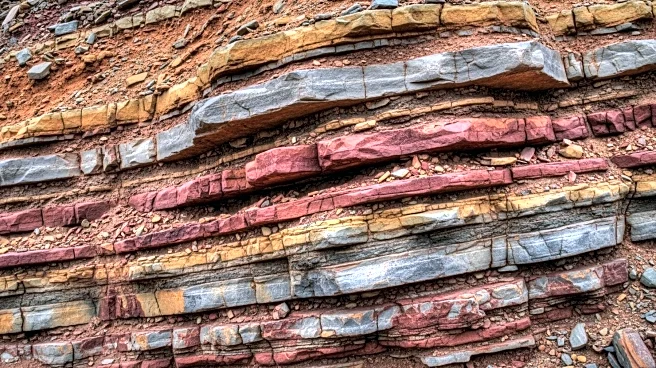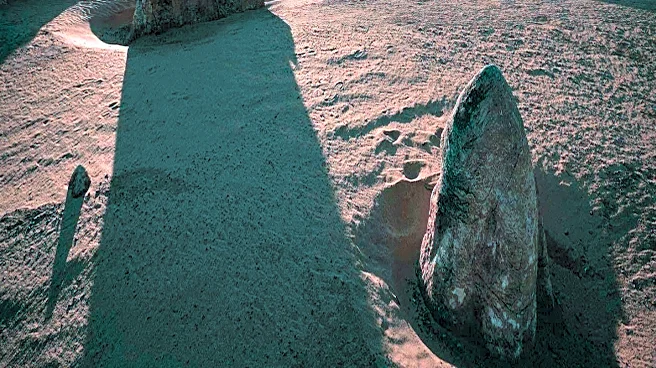What is the story about?
What's Happening?
A study led by Curtin University has uncovered the origins of a significant niobium deposit in central Australia, revealing insights into the geological processes that occurred during the breakup of the ancient supercontinent Rodinia. The research identified niobium-rich carbonatites, which were emplaced over 800 million years ago through fault zones during a tectonic rifting event. These findings provide new understanding of how rare, metal-rich magmas reach the Earth's surface. Dr. Maximilian Dröllner, the lead author, highlighted the strategic importance of niobium in producing high-strength steel and clean energy technologies. The study utilized isotope-dating techniques to determine the age and formation process of these carbonatites, offering a detailed reconstruction of geological events spanning over 500 million years.
Why It's Important?
The discovery of niobium-rich carbonatites is significant due to niobium's critical role in various industries, including aerospace, energy, and technology. Niobium is essential for manufacturing lighter and stronger steel, which is used in aircraft, pipelines, and electric vehicles. Additionally, it is a key component in next-generation battery and superconducting technologies. Understanding the formation of these deposits can aid in the exploration and extraction of niobium, potentially impacting global supply chains and technological advancements. The study's use of advanced geochronology and isotope techniques demonstrates the potential for uncovering complex geological histories, which can inform future mineral exploration efforts.
What's Next?
The findings from Curtin University's study may lead to increased interest in exploring similar geological formations for niobium and other critical minerals. Researchers and mining companies might focus on identifying fault zones and tectonic settings that could host carbonatite deposits. The study's methodology could be applied to other regions, potentially uncovering new sources of strategic metals. As demand for niobium and related technologies grows, these insights could drive investment in mineral exploration and development, influencing economic and industrial strategies.
Beyond the Headlines
The study highlights the importance of interdisciplinary approaches in geoscience, combining advanced imaging and isotope analysis to unravel complex geological histories. This research not only contributes to mineral exploration but also enhances understanding of Earth's tectonic processes and their role in shaping mineral resources. The findings may prompt discussions on sustainable mining practices and the ethical implications of exploiting rare mineral deposits, considering environmental and societal impacts.
AI Generated Content
Do you find this article useful?















